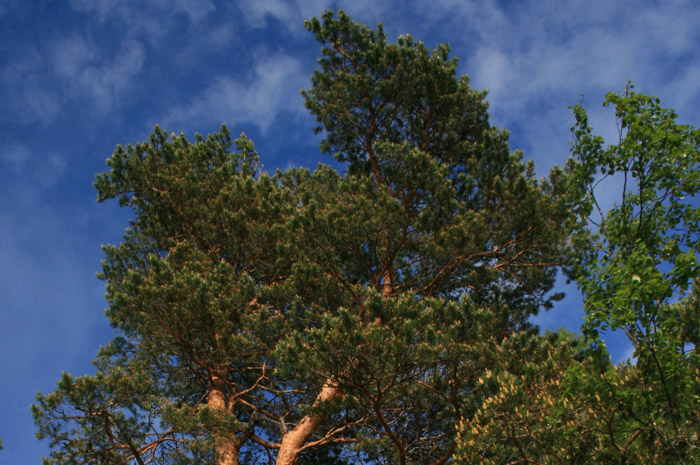Scots Pine is not exactly native here, but in our red river soil it is much more successful than many of our native varieties. There are few pines that will thrive in our heavy clay and cold winters, but the Scots Pine is tough. The key is to plant them in a well drained area as they will not tolerant soggy soil, particularly in clay.
While Spruce needles are approximately one inch long, the needle of a Scot’s pine can be 2-3 inches long and are not nearly as sharp. They can grow up to 12 inches a year, but I would not count on more.
The Scots Pine has a lot of orange colour in its bark, particularly as it grows older. With the inner needles shedding with age, it shows off this ginger bark beautifully, especially in winter. Because of the way their foliage eventually “hollows out” they are not the best tree for privacy. All evergreens shed this way with age, it is just a lot more obvious in Scots Pine.
It is not uncommon for deer to nibble the dormant buds off of a pine during winter. While this won’t kill the tree it will set it back until it can form new ones in June. Stucco wire to keep them away from young trees is recommended. Almost every evergreen in the wild has no branches or foliage on the bottom six feet thanks to the giant antlered rats.




